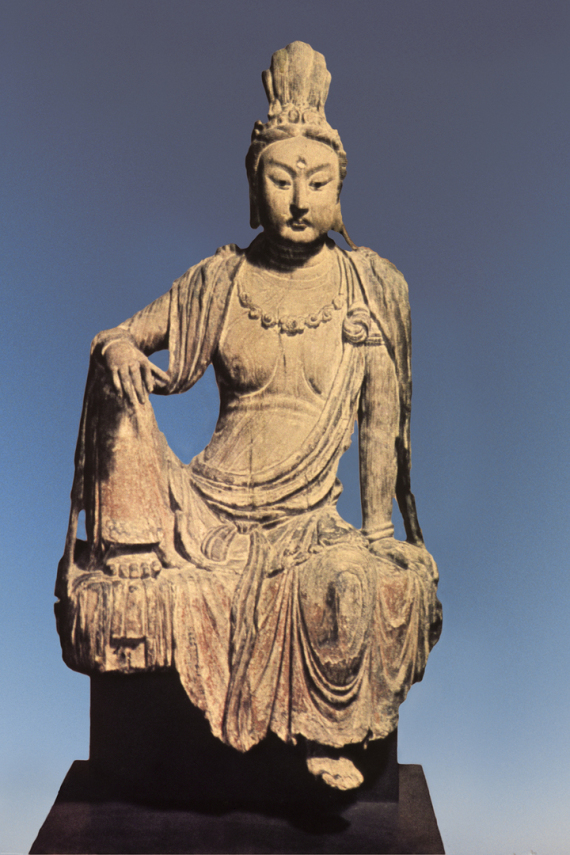
Kuan Yin (scroll down for image): In 1970 I was living just a half block from the Memorial Art Gallery of Rochester, NY (and just down the street from the Zen Center) and would go there from time to time to see the Kuan Yin; they were selling a five by nine postcard of it which I’ve had mounted on my wall all these years. Last year I took a photo of it, to enlarge it (for this reason it's not real sharp), fix it up in Photoshop (putting in a new background), and to mount it in a frame in my sitting room.
This Kuan Yin is especially meaningful to me for the following reasons: most Buddhas and Bodhisattvas have a smile on their faces. This one has rather an expression of profound intensity. I sense that it (and presumably its creator) has descended into "hell" . . . and returned. In my experience, many so-called spiritual people have a fairytale idea of what spirituality is. They think it’s all joy, love, peace, etc. They don’t want to know that genuine joy, love, and peace require descending into a realm that is utterly devastating to the self, the me, the finite being. But only in this way can the infinite spirit -- in Huang Po's words, "This pure Mind, the source of everything
. . ." -- be fully liberated.
Rainer Maria Rilke echoed this almost precisely in a letter: “. . . as soon as we accept life’s most terrifying dreadfulness, at the risk of perishing from it . . . then an intuition of blessedness will open up for us. . . . Whoever does not, sometime or other, give his full consent, his full and joyous consent, to the dreadfulness of life will have been neither alive nor dead. To show the identity of dreadfulness and bliss, these two faces on the same divine head, indeed this one single face, which just presents itself this way or that, according to our distance from it or the state of mind in which we perceive it—: this is the true significance and purpose of the Elegies and the Sonnets.” To expand and elaborate on this theme is also at least part of the significance and purpose of Cabeza. Read the home page in full, and Cabeza for more.
